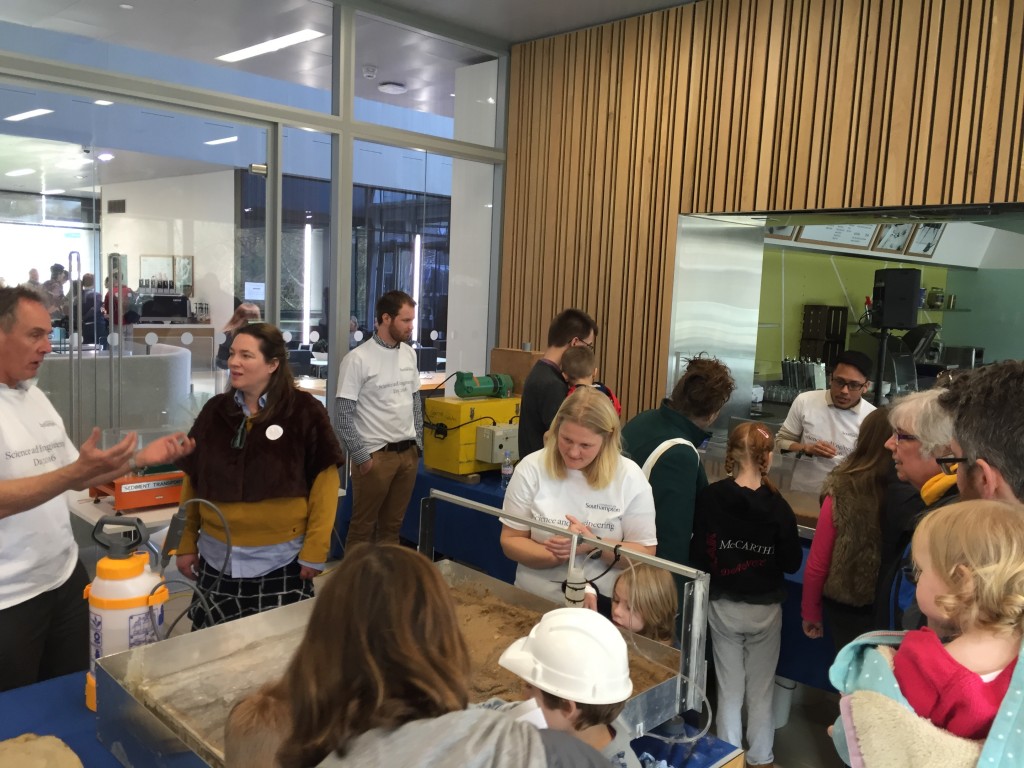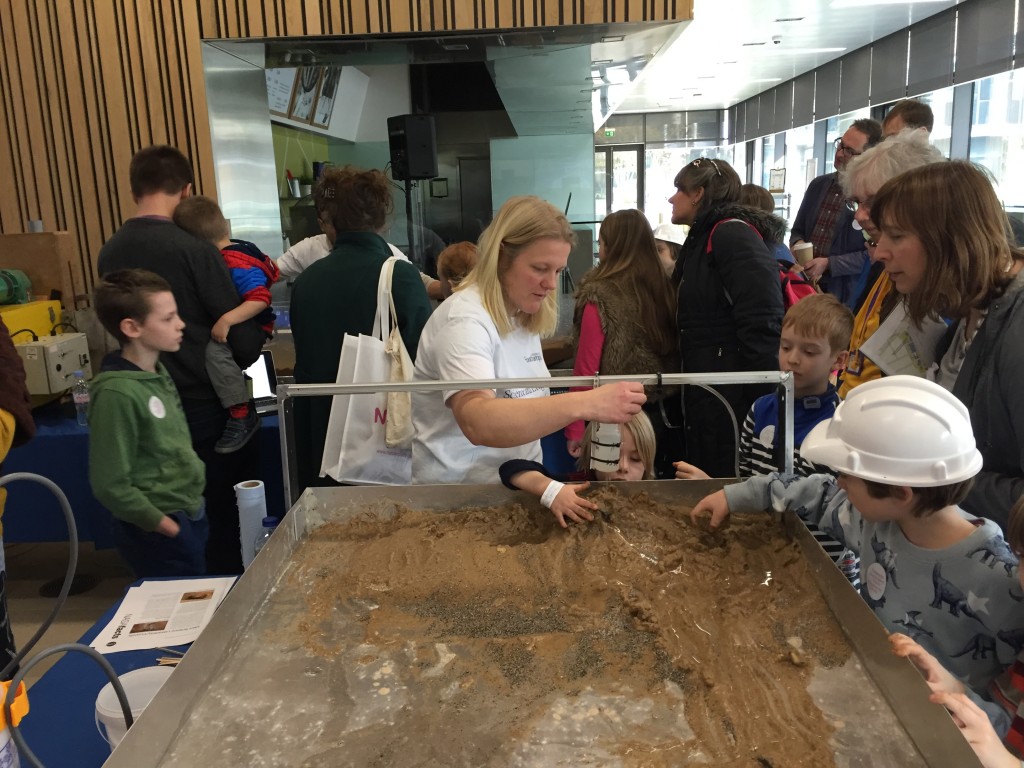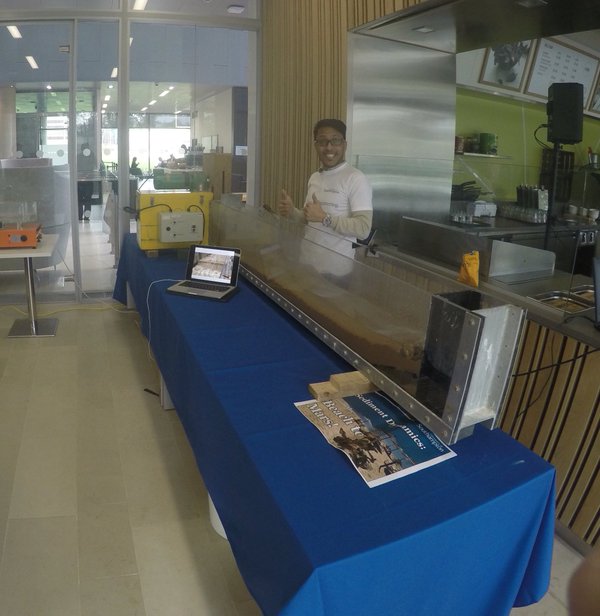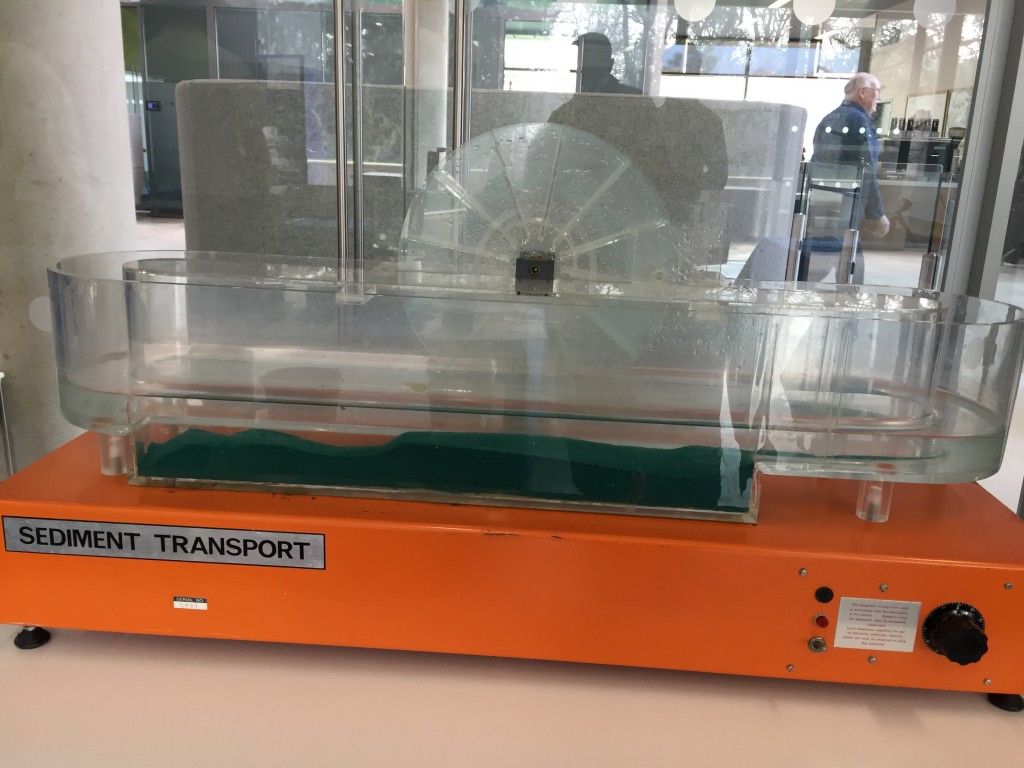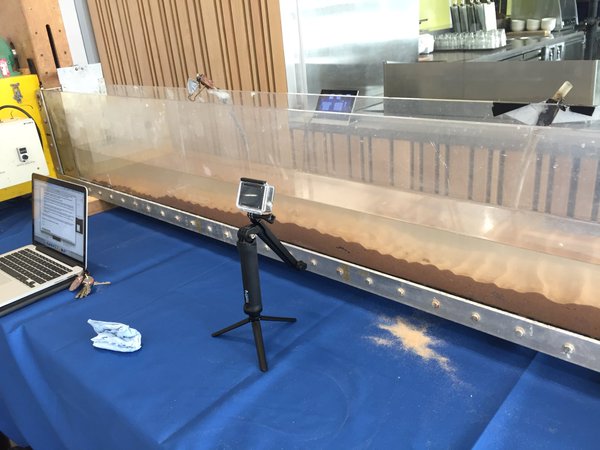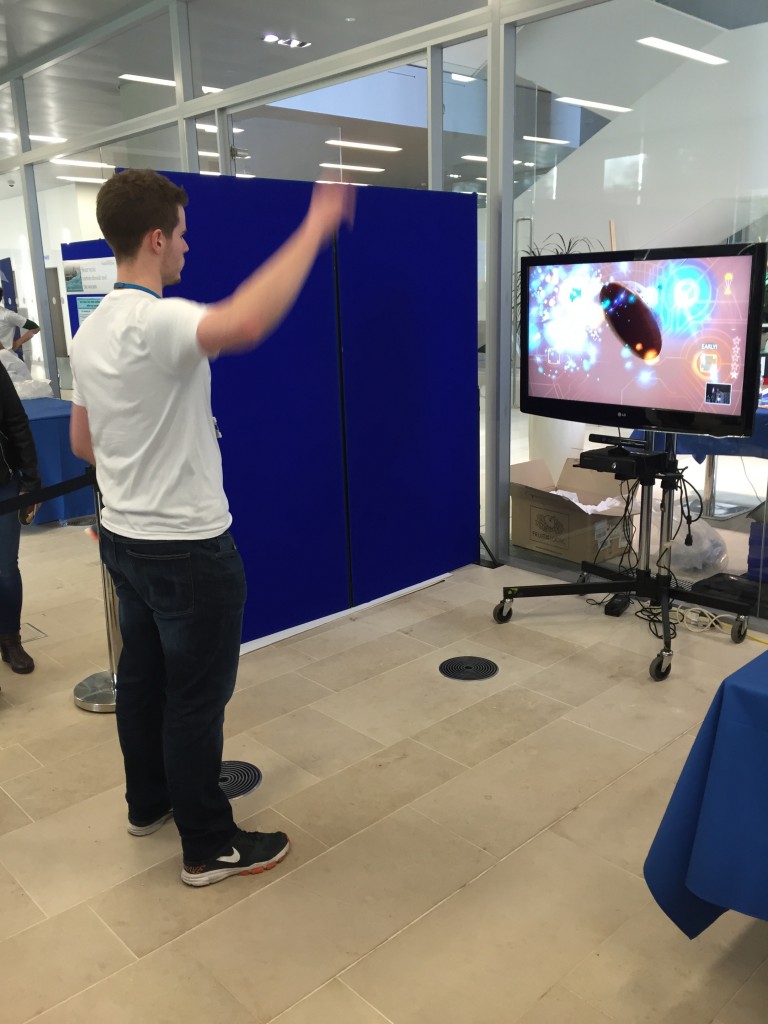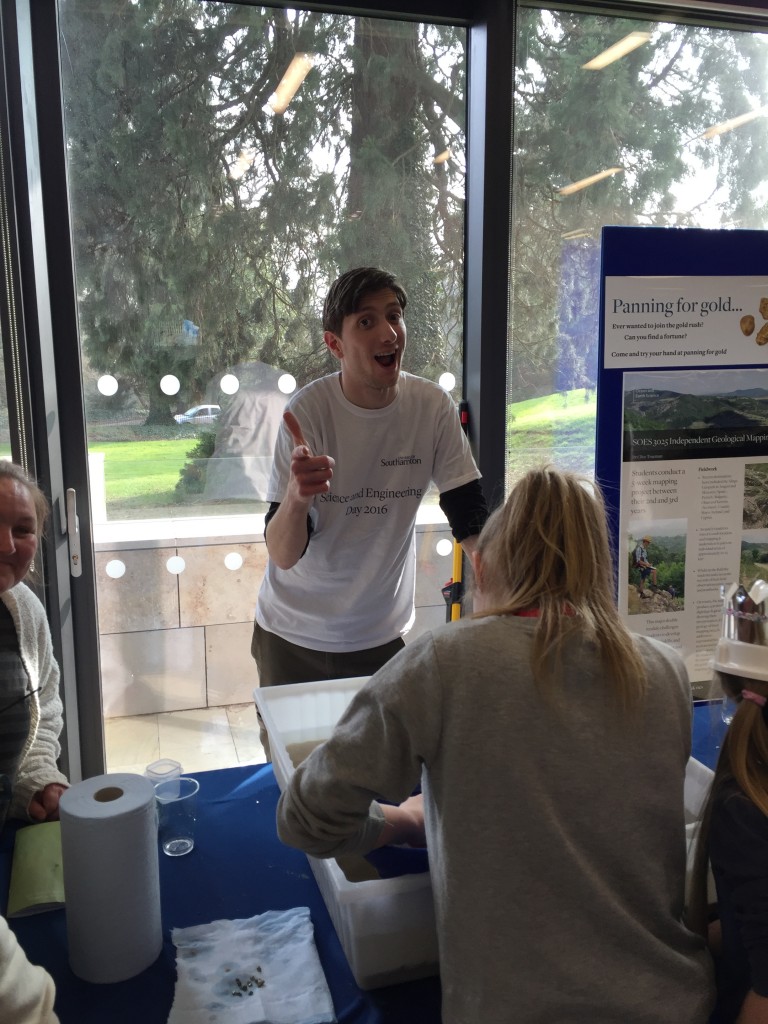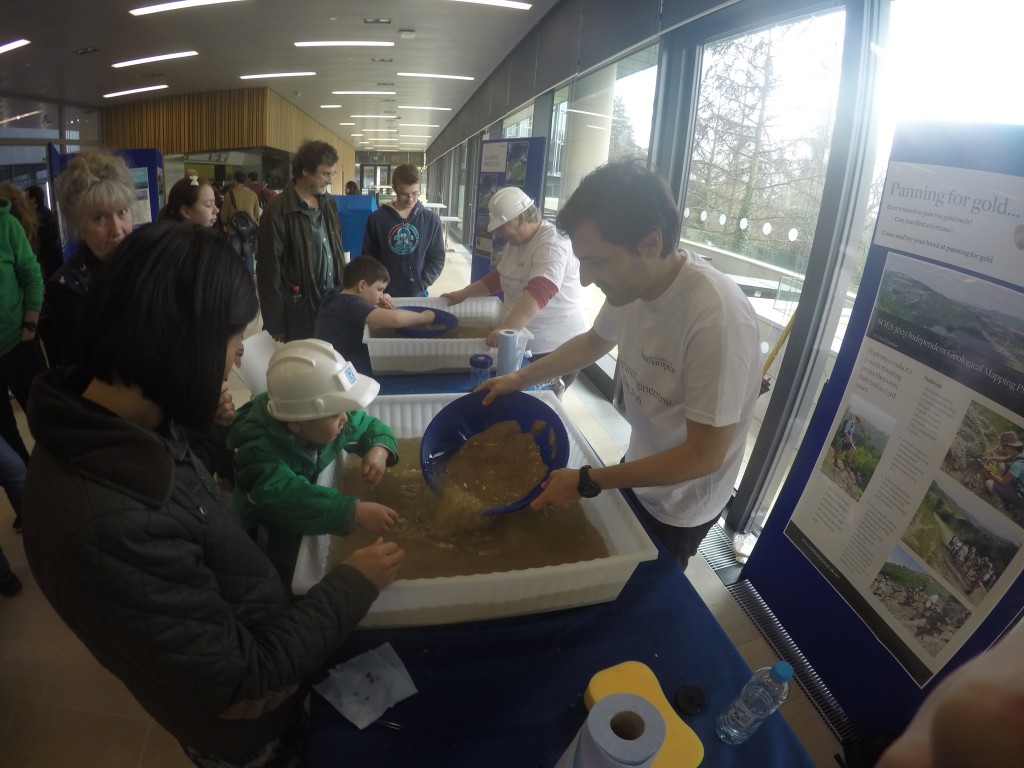As part of Southampton Science and Engineering Festival, a team from Geology&Geophysics research group put on a large, and largely popular display on Sediment Dynamics at the new Bolderwood Innovation Campus. The University’s Science and Engineering Day 2016 took place on Saturday 12th March. This free event was part of British Science Week www.britishscienceweek.org and was previously awarded Best STEM (science, technology, engineering and maths) Institution Event in 2014.
Our display aimed to bring out elements of research on sediment dynamics and how it shapes our world, from beaches to deltas and river meanders on Earth; and how using this knowledge, we can infer processes that shaped Mars.
The range of interactive displays proved highly popular with children and parents alike; and very intriguing questions were raised. Overly enthusiastic children were reshaping lakes, river bends, deltas, and even controlling the rainfall in a small purpose built streamtable. the demonstration wave tank also proved popular, particularly with surfers who, over and over again, asked to recreated an artificial surfing reef to see how the waves changed form as the propagated along the beach. Many were intrigued by how quickly a beach could change its profile between ‘winter’ and ‘summer’ wave conditions, and how different bedforms/ripples were under waves and currents. In the small sediment transport channel, current ripples are observed, and many children enjoyed altering the speed of flow, looking at vortex motions, and poking obstacles to observe scour around submerged structures.
Undoubtedly, our NASA-designed xBox game was also very popular; as kids, demonstrators, and parents competed to fly the different stages of descent, and safely land the Curiosity rover on the surface of Mars. Posters around the displays linked the various forms and shapes observed on Mars to similar processes on our home planet.
Finally, though not strictly part of the display, many got there hands down and dirty trying to retrieve gold from sediment samples at the gold panning station.
Overall, the display was largely popular; and we look forwards to next year. Many thanks are due to Hachem Kassem for organising and coordinating the display, to John Davis and Esther sumner for help with building and setting up, to Sally Rushworth and Brain Dickie for help all along, and ofcourse to the very motivated GG phd students Anas Annuar, Jamie Hizzett (‘who rocked at landing crafts!), and Age Vellinga for manning the displays; and to everyone who came along.

